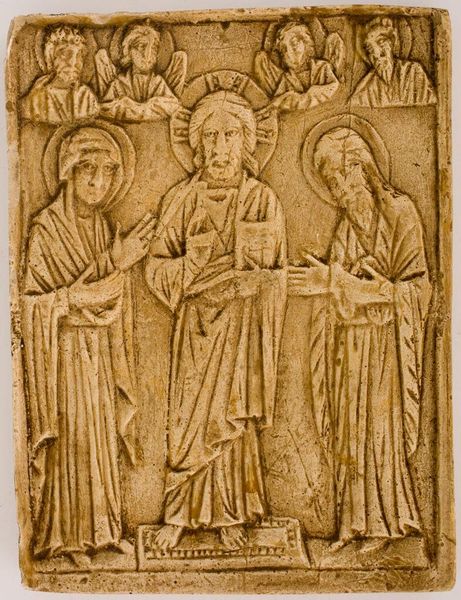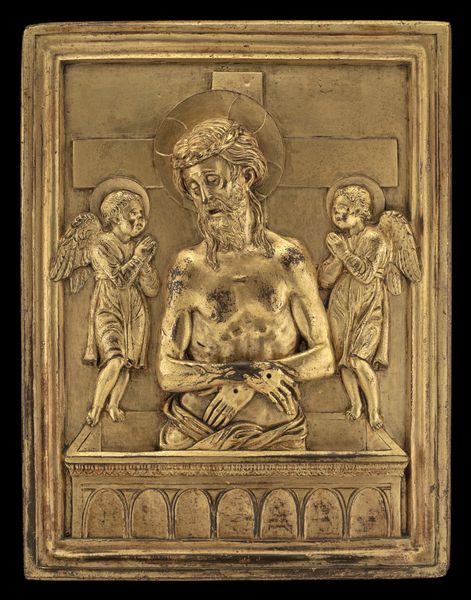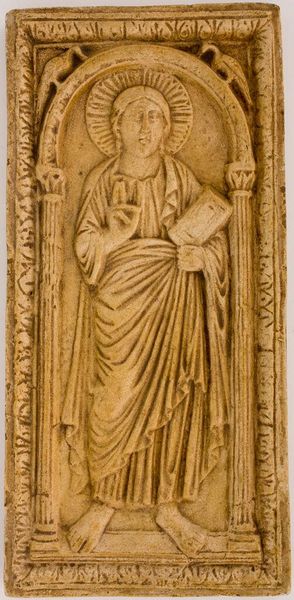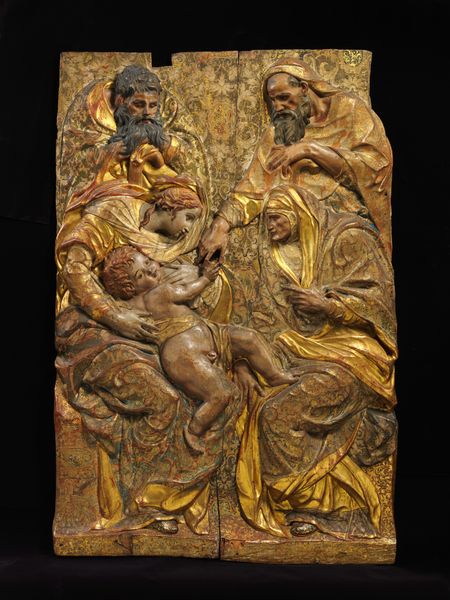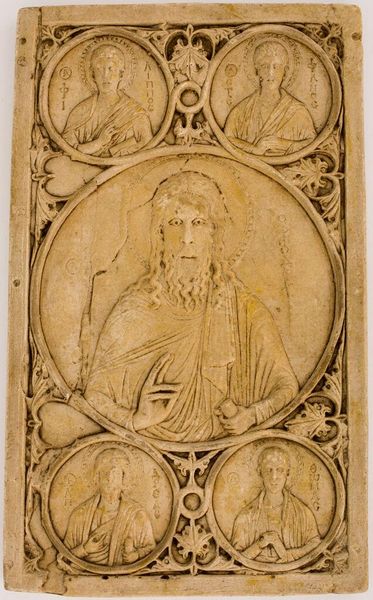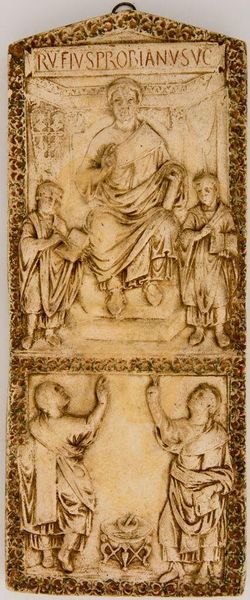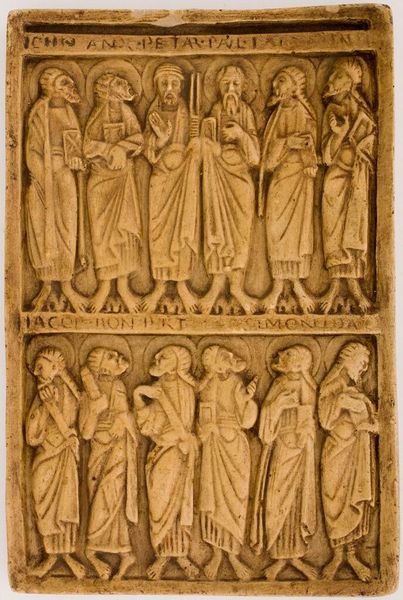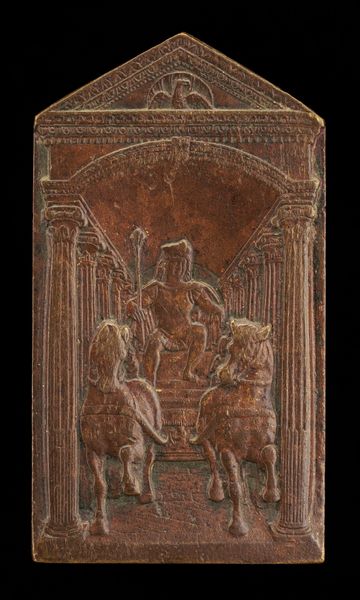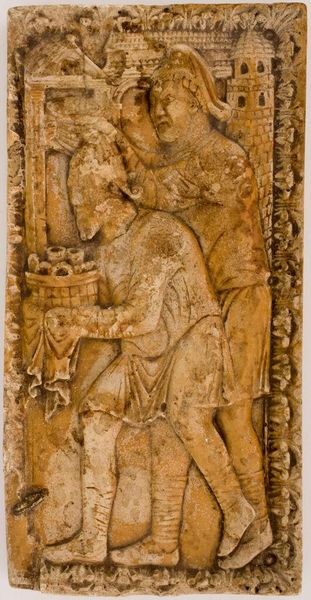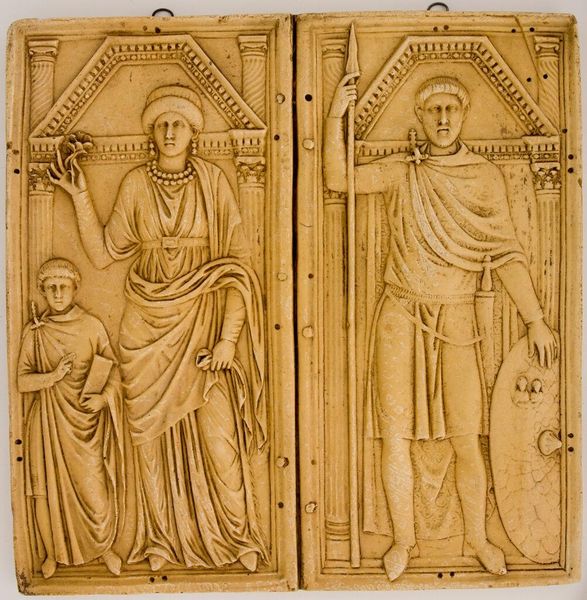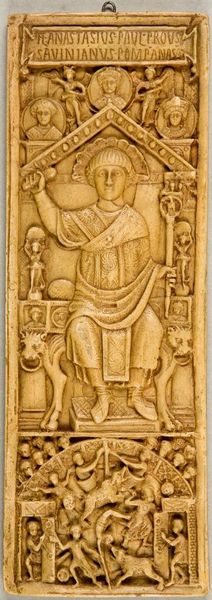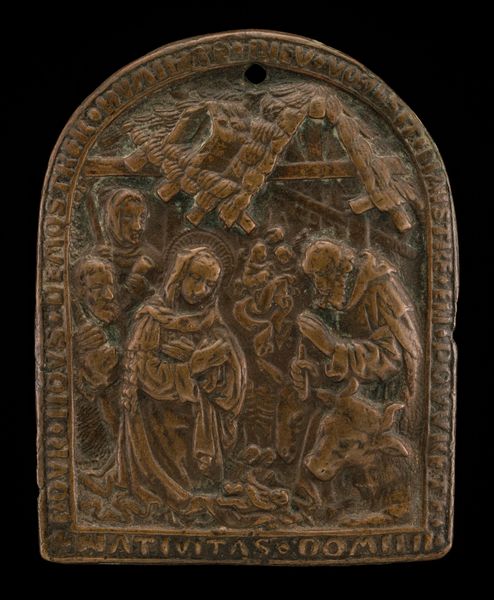
Relief Altarpiece with Saints Peter, Paul, and John the Baptist 1408
0:00
0:00
carving, tempera, relief, sculpture, wood
#
medieval
#
carving
#
narrative-art
#
tempera
#
sculpture
#
relief
#
figuration
#
sculpture
#
wood
#
history-painting
#
italian-renaissance
#
medieval-art
Dimensions: Overall: 66 7/8 x 40 3/8 x 4 1/2 in. (169.9 x 102.6 x 11.4 cm)
Copyright: Public Domain
Curator: Let’s turn our attention to this striking relief altarpiece. Dating to 1408, it's attributed to Gerardo di Mainardo. The piece, housed here at the Metropolitan Museum, depicts Saints Peter, Paul, and John the Baptist, carved in wood and adorned with tempera. Editor: My first impression is one of subdued solemnity. The colors are muted, and the figures have this serious, almost austere quality, despite their placement in what was likely a vibrant altarpiece setting. Curator: The carving itself is quite remarkable. Consider the process: meticulously removing material to reveal these forms. And look at the surface; we can almost feel the texture of the wood beneath the paint, hinting at the physical labor involved. The very choice of wood speaks to accessibility of local materials. Editor: Indeed. Peter, central in the composition, holds the keys – symbols of his authority, as the keeper of the gates of Heaven. To his left is John the Baptist, with his wild hair, symbolizing asceticism. Then, Saint Paul stands on the right holding a sword, an emblem of his martyrdom. Even the Virgin and Child at the top radiate their meaning as signs of motherly love and compassion. Curator: I'm particularly struck by the material presence of these figures. They're not simply images, they are weighty forms, communicating not just visually but through their palpable materiality. We shouldn't overlook that this piece likely resided in a space designed for communal ritual. Editor: It’s fascinating how these saints retain their distinct personalities even within this unified sculptural form. I'm thinking of Peter’s confident stance, Paul’s quiet resolve. They all radiate a distinctive quality appropriate to their roles in Christian history and devotion. Curator: It's a dialogue, really, between artistic skill and the religious culture in which it was made, a blending of artistic expression and communal belief expressed through skillful production and locally acquired material. Editor: Exactly. And the survival of these symbols throughout the centuries reminds us of the enduring power of imagery. They act as time capsules that transmit complex cultural narratives about power and the spiritual realm. Curator: Considering the hands that shaped it, and the social context in which those hands worked is a window into the values of the past, a material connection to 15th-century craftsmanship and spirituality. Editor: A deeply symbolic piece! Examining this artwork helped us connect not only with a certain period, but also a range of shared stories that keep influencing the art around us even nowadays.
Comments
No comments
Be the first to comment and join the conversation on the ultimate creative platform.
